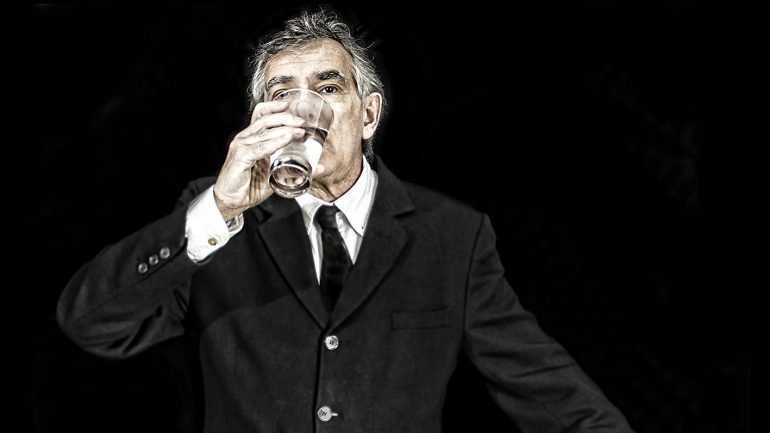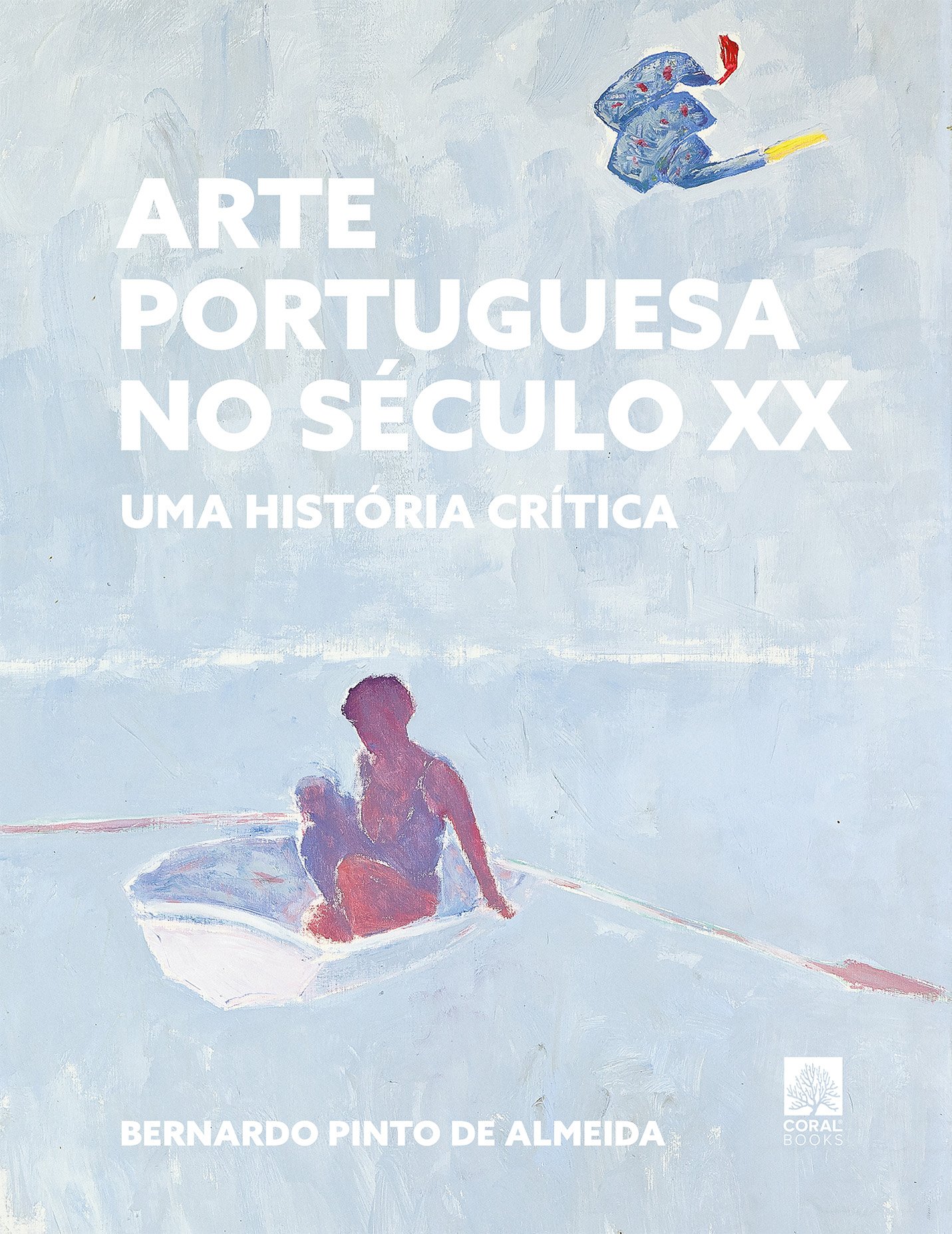Título: “Arte Portuguesa no Século XX. Uma história crítica”
Autor: Bernardo Pinto de Almeida
Prefácio: Manuel Villaverde Cabral
Editora: Coralbook
Páginas: 496

O “velho” quadro de Nikias Skapinakis, na Brasileira do Chiado, em Lisboa, com cinco críticos de arte em volta duma mesa de café (1971, 120 x 180 cm) bem precisa duma réplica actualizada, dada a emergência de novos críticos, curadores, museólogos e académicos, gente que agora tem entre 50 e 65 anos, se foi fazendo notada e disputou posições de apreço, influência e poder junto de galerias, fundações, coleccionadores (sérios ou adventícios, para dizer o mínimo), e naturalmente dos artistas e da imprensa. O lento afastamento de José-Augusto França, 94, a abrupta partida de Rui Mário Gonçalves em 2014 e o quase-ostracismo de João Miguel Fernandes Jorge, 73 — um poeta que afirmara uma renovadora abordagem crítica (“Sentir o olhar” foi palavra de ordem dada em título de uma coluna em jornais que fez época) — traçaram o fim irrevogável duma era. Jorge Calado, 78, ainda se mantém activo como crítico de fotografia, mas já tem “sucessores” à ilharga.
Um dia chegará em que toda essa época — e seus diferentes modos de pensar e agir — será avaliada panoramicamente, mas é algo que só o largo tempo histórico ajudará a fazer. Desde já, poderá observar-se que alguns parecem ter mais apetite, pressa e agilidade do que outros para a dança das cadeiras tutelares. Cada um nasce para o que é, bem diz a sabedoria popular.
Bernardo Pinto de Almeida, 62, nunca deixou em mãos alheias os créditos obtidos por um persistente trabalho crítico focado sobretudo num pequeno núcleo de artistas plásticos de sua predilecção, e por ser, sobretudo após a morte de Fernando Pernes em 2010, o crítico de arte mais activo e facilmente conotado com “a vida cultural do Norte” do país — por mais que tal categorização seja equívoca ou atormente quem deplore rótulos fáceis e regionalismos desse ou de qualquer outro tipo. A ele se devem, quase em exclusivo, alguma merecida actualidade crítica em volta de Fernando Lanhas e Nadir Afonso — para já não falar de Ângelo de Sousa —, e a revelação impactante dos desenhos de Maria Antónia Siza.
A sua bibliografia é de certa forma extensa, e o seu nome surge amiúde em catálogos de galerias e obras colectivas sobre artistas plásticos portugueses de algum renome. Tem sobre colegas de ofício formados nos mesmos anos e quase que com os mesmos mestres, a vantagem formal de ser professor catedrático em Belas-Artes (há apenas outros dois, Margarida Acciauolli e Vítor Serrão), mas falta-lhe traquejo de curadoria e investigação de grande fôlego — cujo máximo pico foi atingido entre nós por Helena de Freitas, 58, com a poderosa e inesquecível exposição «Diálogo de Vanguardas» (Gulbenkian, 2006-7), que pôs Amadeo de Souza-Cardoso pela primeira vez face a face com o melhor do seu tempo — ou uma carreira internacional em museus, como a de João Fernandes em Madrid e a de Pedro Gadanho em Nova Iorque, sequer doméstica, como a de Pedro Lapa, João Pinharanda, Delfim Sardo ou dos curadores Bruno Marchand, Miguel Wandschneider e Nuno Faria. Ou, mesmo, uma inspirada “pedagogia da arte” em diálogo, como a de Paulo Pires do Vale.
O arrojo de escrever sozinho uma história da arte portuguesa no século XX, à qual atribui em título o qualificativo de crítica — e poderá perguntar-se, de imediato, se poderá haver alguma que não o seja e se o no escolhido não presume perigosamente uma arte nacional, de difícil justificação conceptual —, é para todos os efeitos um inesperado grande passo em frente que merece ser saudado, quaisquer que sejam as considerações que suscite ou o prestígio de referência bibliográfica que venha a conquistar. Em terra de meias tintas, troca-tintas e subsídio-dependência crónica, é de louvar o impulso dado para um debate de ideias — em que o longo prefácio de Manuel Villaverde Cabral se propõe participar —, tanto quanto a autonomia deste projecto editorial de notório orçamento avultado e surpreendente excelência gráfica, protagonizado por uma pequena, nova e discreta editora de Matosinhos.
Na verdade, sem que seja declarado, este grosso e pesado livro (o seu uso continuado mostrará a falta que lhe faz o conveniente hard-cover…) parece ser uma versão nova, muito reforçada, necessariamente actualizada, quase um quarto de século depois, de Pintura Portuguesa no Século XX, publicado pela Lello em 1993, de que aliás adopta grosso modo a organização temática e até a preferência por um quadro de António Dacosta na capa (hoje Dois Limões em Férias, outrora O Cálice). Pinto de Almeida vem corrigir a desatenção ali reconhecida ao “fenómeno escultórico [e fotográfico] português” (sic), motivada pela “falta de tempo para o fazer”, e reforçar a sua preocupação com um “dicionário de artistas portugueses que continua a tardar”, mas o figurino primicial fixa-lhe demasiado a perspectiva, anulando a transversalidade expectável de uma obra deste tipo editada em 2017.
A integração das artes, pilar do projecto modernista — a que o autor aqui presta tanta atenção —, tem sido crescentemente atendida pela historiografia recente, seja em volta de artistas canónicos como Almada Negreiros, como atesta a retrospectiva há dias inaugurada, ou Júlio Pomar (cuja casa-oficina tem proposto a re-descoberta do seu desempenho em artes decorativas), seja pelo que vai sendo posto a claro numa não menos interessante história do design no nosso país (ainda em progresso), com contributos relevantes e persistentes de Rui Afonso Santos, José Bártolo, Helena Souto, Jorge Silva e João Paulo Martins, entre outros.
Todavia, esta História crítica da arte não lhes presta a mínima atenção, como sucede, aliás, à arquitectura e ao cinema, sequer a dois outros temas de artes plásticas aos quais não deveria ser indiferente e que, curiosamente, são objecto de dois livros prestes a chegar às livrarias: de Adelaide Duarte O Coleccionismo Privado de Arte Moderna e Contemporânea em Portugal (Caleidoscópio, 427 pp.) e de Catarina Rosendo Escritos de Artista em Portugal: história de um esquecimento (Documenta, 240 pp.) — que resultam, na verdade, de teses académicas que Pinto de Almeida não pode desconhecer.
De resto, como tão bem demonstra a tríplice exposição “Portugal em Flagrante” na Fundação Gulbenkian (2016-17), a justaposição documental de aparente marginalia ajuda sobremaneira à contextualização histórica da actividade artística, fornecendo elementos essenciais para o seu estudo e compreensão.
Não é tão-pouco essa a via escolhida por Bernardo Pinto de Almeida, que prefere ser o mais egocêntrico one man show, que dispensa bibliografia e raramente cita — ou confronta — opiniões alheias. Retrospectivas consolidadas por anos de pesquisa, como temos tido algumas, que ajudaram a formar um escol de curadores experientes, cuja importância seria absurdo desvalorizar, e produziram catálogos que logo se tornaram instrumentos de referência quase absoluta, não lhe merecem comentários. O esforço de editores (e que são tão poucos…) para a criação duma biblioteca de filosofia da arte, ou afim, de traduções ou originais, tão-pouco lhe suscita louvor.
A ascensão e queda de galerias de arte, meio que aliás Bernardo Pinto de Almeida muito bem conhece, não é objecto de análise, mesmo quando elas foram — e continuam a ser — decisivas para gerações de artistas. Neste seu “dicionário de artistas”, Hein Semke, luso-alemão que tão determinante foi (e deixou um diário útil à percepção do nosso meio artístico de 1950-60), não é sequer referido, outros são banidos, como Gérard Castello-Lopes (!), Mário Botas e David de Almeida, ou neglicenciados, como Salete Tavares e Bartolomeu Cid dos Santos (meras referências ocasionais), Sena da Silva (um elogio, mas nenhuma imagem) e Menez (vinte linhas, nenhum quadro), ou até — pasme-se! — insultados, como sucede a Eduardo Batarda (v. p. 357), que também vê aqui a sua obra reduzida a um “selo” marginal.
É compreensível e legítimo que um crítico ou historiador de arte — aliás, como qualquer um de nós — tenha preferências e de algum modo uma “bolsa de valores” pessoal, e por maioria de razões, mais trabalho feito sobre este e aquele artista plástico, mas na hora de editar um trabalho deste calibre, responsabilidade e ambição — na contracapa lê-se: “De agora em diante esta obra será a história da arte portuguesa do século XX” —, alguma parcimónia lúcida é-lhe exigível, para que o livro seja mais sobre o tema em causa do que sobre o seu próprio autor. Tais limites de sensatez não parecem ter sido atendidos, ainda que não restem dúvidas de que Bernardo Pinto de Almeida tem toda a legitimidade para defender os seus pontos de vista, revirar à sua maneira a mesa do café e depois propor um debate inter pares. Fez, de resto, uma muito boa selecção de obras a reproduzir que escapa ao déjà-vu apressado ou rotineiro habitual em publicações deste género, demonstrando capacidade de ir buscar algumas delas a discretas colecções privadas a que poucos terão acesso.
Uma tiragem especial, em duas séries de cem exemplares, foi produzida com serigrafias (v. p. 13) de Alberto Carneiro e Manuel Casimiro, e de Miguel Branco e Albuquerque Mendes, respectivamente, colocadas em luxuosas molduras em nogueira americana que também formam a caixa do livro. À atenção dos coleccionadores!























